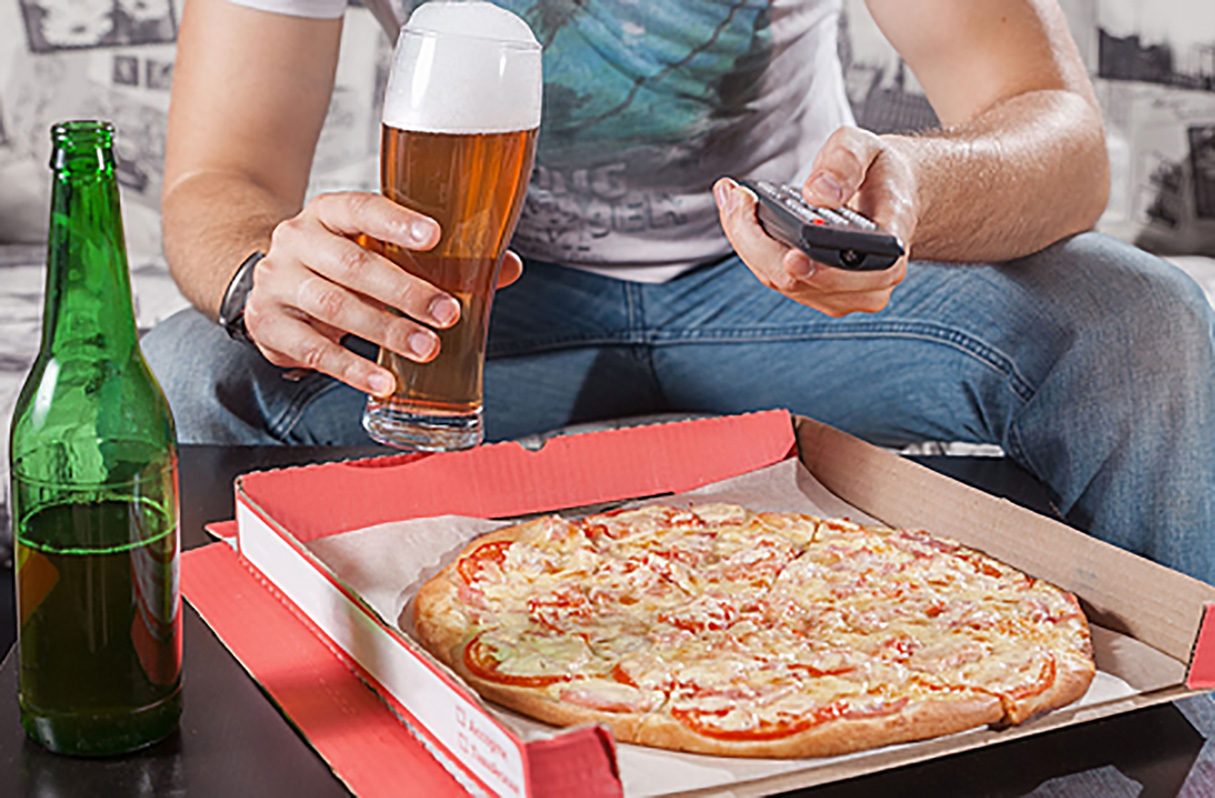By Timi Gustafson R.D./for the Reporter
Recently I came across a photo collection by the photographer Stephen Shore about the lifestyle habits of Americans. Many of the images showed people eating their meals at home, sitting on chairs, sofas or on the floor – almost always while watching television.
The conveyed impression is not misleading. According to surveys, more than two-thirds of us have the tube on during dinner. Many homes don’t even have a separate dining room anymore because there is no need or desire to gather around a table.
Those practices are not only widespread, they have almost become automatic. And they are hard to stop. In fact, this craving for constant distraction and entertainment, including at meal times, fits the profile of addiction, on par with alcohol- and substance abuse, according to experts.
Millions of people are so hooked on their favorite TV shows, they seem unable to keep themselves from watching even for a limited amount of time, such as the duration of a sit-down meal, according to Robert Kubey, a psychologist at Rutgers State University of New Jersey who specializes in media studies.
And it is not just the after hours routine that’s disconcerting. Staying fixated on computers or smart phones practically all day long is commonplace for many. As a consequence, distracted eating has become the norm rather than the exception in many people’s lives.
Especially children are at risk of forming such habits early. Studies have shown that kids who are allowed to snack while watching TV or playing video games can become gradually insensitive to cues of satiety, causing them to overeat.
When we lose focus on how our food smells, tastes and feels like because we are otherwise occupied, we remain unsatisfied and consume more to fill the void, as researchers found who conducted experiments on the subject.
The main concern about distracted or hurried eating, of course, is weight gain because people lose track of their food intake and also of their timing. Studies from Harvard University showed that participants did not only eat more, they also ate later in the evening and sometimes into the night, as they continued watching TV or surfing the Internet.
By contrast, those who avoided distractions, were attentive to their eating behavior and related consciously to their food were satisfied with smaller amounts and were not tempted to eat more later on.
What it really comes down to is that whenever it’s time to eat, we should make food the main event, enjoy every bite and afterward get off our seats and do something to burn it off. Sounds really easy, doesn’t it? Well, it can be done.
Timi Gustafson R.D. is a registered dietitian, newspaper columnist, blogger and author of the book “The Healthy Diner – How to Eat Right and Still Have Fun”®. For more articles on nutrition, health and lifestyle, visit her blog, “Food and Health with Timi Gustafson R.D.” (timigustafson.com). You can follow Timi on Twitter, on Facebook and Google+.


